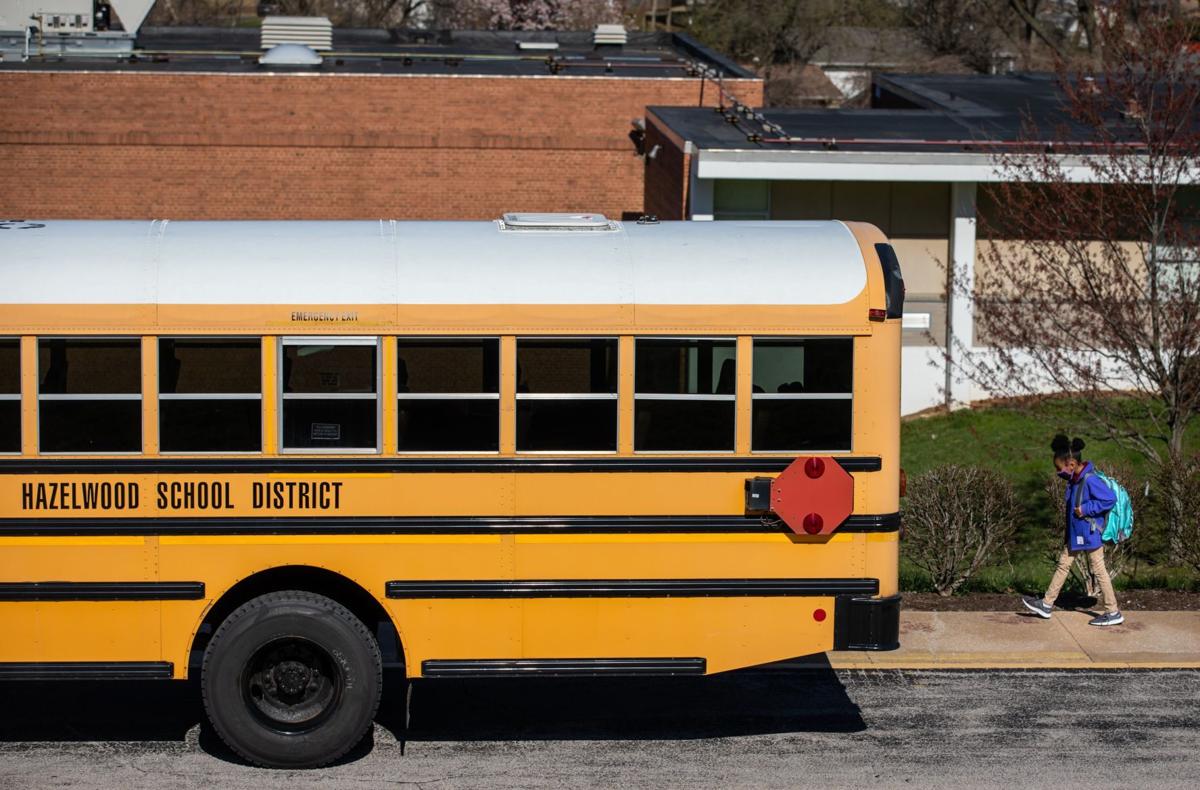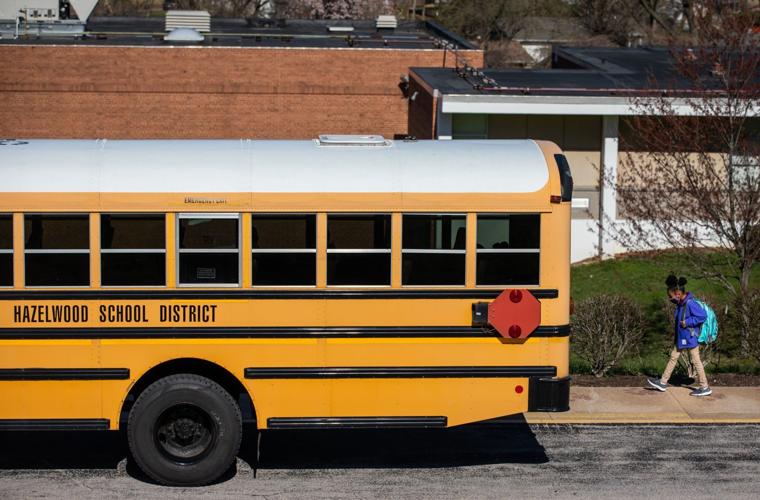HAZELWOOD — Hazelwood School District is considering whether it should do what no other school district in ×îĐÂĐÓ°ÉÔ´´ County has done — run its own special education department.
District officials heard a presentation on what in-house special education services could involve during a school board meeting on Sept 2.
Such a move — which district leaders stressed was not a possibility for the near future — would represent a significant shift away from the unique special education system ×îĐÂĐÓ°ÉÔ´´ County has used for the past 70 years.
It would require a break from Special School District of ×îĐÂĐÓ°ÉÔ´´ County, the largest provider of special education in the state, which services the county’s 22 school districts.
No district in the county has stepped away from Special School District, or SSD, since it formed in 1957.
People are also reading…
SSD was established via legislation at the time. It is funded, in part, by a voter-approved tax. Changing how services are provided in Hazelwood schools would require a change to state law and approval through a countywide vote. It is unclear whether a change by the Legislature would include a repeal of the SSD tax on Hazelwood residents or whether it could be redirected to the district.
±á˛ąłú±đ±ô·É´Ç´Ç»ĺ’s covered the financial and logistical considerations of leaving SSD and operating its own special education department.
District leaders will not say what prompted the discussion.
A Hazelwood spokesperson has denied or ignored interview requests. A public records request for internal communications returned only a slideshow presentation from the board meeting, and lacked a memo from Superintendent Nettie Collins-Hart on the proposal on a district website.
During the hour-long presentation, school board members and district officials were careful not to speak negatively about SSD. Nor did they give any indication that a break from SSD was a real possibility.
“We are just, for a lack of better words, seeing what our options are,” Sylvester Taylor II, president of the school board, said during the meeting.
It was clear from the discussion, however, that some Hazelwood officials believe the district could better serve its students with special needs on its own.
“I believe, in my heart of heart, that who better to teach our special needs kids (than Hazelwood School District),” Taylor said.
Board member Sparkl West-Pruitt, whose son receives special ed services from SSD, said the discussion was “long awaited.”

Hazelwood School Board President Sylvester Taylor II speaks during a board meeting at Jana Elementary on Tuesday, Nov. 15, 2022, at Hazelwood School District Learning Center.
West-Pruitt said she decided to pursue a seat on the Hazelwood school board, in part, because of what SSD “would not do for my child,” adding district officials said her son had to fail before he could receive services.
She cited a “divide” between Hazelwood and SSD and complained of “terrible attitudes” she has seen from SSD teachers.
“I uphold this, and know that we can do this and that we can do it correctly to benefit our students,” West-Pruitt said during the meeting.
An uncommon system
SSD is one of only a handful of such districts in the country, and one of only two special school districts in Missouri to offer countywide special education.
Most of the district’s nearly 23,000 students receive services in their local public schools. SSD also operates six of its own locations for students with high needs and two technical schools with highly sought-after programs.
At the time of SSD’s formation, local education leaders said there were too few students needing special services at any of the then-29 school districts in ×îĐÂĐÓ°ÉÔ´´ County to educate them efficiently and economically.
According to Post-Dispatch archives, there were about 2,000 students with physical or mental disabilities in the county in 1957.
Hazelwood alone had 2,546 students with special education plans, called IEPs, last school year.
SSD on Thursday issued a statement defending the countywide model, and declared it as vital today as it was in the 1950s, although for different reasons.
“While the number of students identified with disabilities has grown, so, too, has the complexity and specialization of the services they require,” the statement reads.
“SSD’s countywide structure provides districts and families access to an extensive range of programs, staff expertise, and resources that no single district could easily replicate on its own. This includes highly qualified staff who provide specialized classrooms, therapeutic and behavioral supports, assistive technology, transportation, and transition and career services.”
In early 2024, some parents in Clayton School District said having a separate system for special education failed students with disabilities, citing onerous bureaucracy and a lack of communication between SSD and Clayton. The parents said they felt caught between two districts and were unsure who to contact when problems arose.
Clayton parent Tahnee Jackson-Whitlock said things have improved drastically in the nearly two years since.
The districts work together more, she said. And when parents report issues, they no longer “fall on deaf ears because no one was taking responsibility,” Jackson-Whitlock said.
“Everybody seems all in now,” Jackson-Whitlock said.
Hazelwood concerns
Some concerns related to special education in Hazelwood have bubbled up in recent years.
Last school year, Hazelwood and SSD settled a due process complaint, which are filed predominantly by parents who believe their children wrongfully were denied services or provided inappropriate services. Details of the complaint are not publicly available. It was one of 12 settled with SSD last year, .
The other 11 complaints involved six districts, including four filed against Parkway School District and two against the Lindbergh School District.
In July, a long-term substitute teacher sued SSD and Hazelwood over claims of retaliation, saying she was reprimanded and demoted after advocating for a student she believed was not given adequate special services.
The student’s mother, Shavette Blackmon, told the Post-Dispatch she has gone back and forth between Hazelwood and SSD for years to advocate for her son to receive the services he needs.
Her son has autism and is now a third grader at Jamestown Elementary. Blackmon called the arrangement “dysregulated and dysfunctional.”
“As a parent, I already had my hands full, but I had to almost unpuzzle what was going on between both of these entities,” Blackmon said.
The lawsuit, filed by substitute teacher Ka’Niesha Robertson, has yet to have a hearing. In a court filing last month, SSD denied it failed to provide adequate services.
Robertson declined to speak about most of the allegations in her , but said she “wasn’t the first” teacher to run into similar problems.
In the district’s statement, Superintendent Michael Maclin said SSD remains focused on serving Hazelwood.
“As needs and support continue to evolve, the value of a countywide special education system like SSD has only deepened,” Maclin said. “Our system adapts with our partner districts, offering the expertise, collaboration, and services they need year over year to ensure every student receives the high-quality education and support they deserve.”
Communication and control
A recurring theme during ±á˛ąłú±đ±ô·É´Ç´Ç»ĺ’s Sept. 2 board presentation was a desire by the district for more control.
Jana Schaefer, coordinator of special education for Hazelwood, said providing services in-house would allow the district to directly manage staffing and expertise that “align closely with district priorities.” Local oversight offers more flexibility, she said. And with teacher supervision and evaluation shifted to a Hazelwood administrator, the district could “optimize the staffing structure to our liking.”
She said a change would position Hazelwood to “lead the way in shaping a 21st Century model of special education,” one that was “student focused and responsive to our community.”
At one point, board member Stephen Lewis asked how the current split system affected Hazelwood.
“I don’t want you to say anything bad about SSD, but I’m going to imagine that because it’s a separate organization, a separate hierarchy, [it] sometimes might impede communication between Hazelwood people,” Lewis said. “You request services, and then it goes into a queue that you guys don’t have any control over.”
“That’s a fair assessment,” Schaefer responded.
The board ended the presentation, according to , by coming to “a consensus to move forward” with seeking legislation to give Hazelwood the option to separate from SSD.
It is unknown how far the district has gone in that process since.
The Post-Dispatch reached out to six state representatives and senators whose districts include Hazelwood. Of the three that responded, none said they had been asked to sponsor legislation on behalf of Hazelwood.
Superintendent Nettie Collins-Hart said the Sept. 2 report was a follow-up to discussions that began in 2023. The district will not take action this year, she said, and “maybe not even the next.”
“This is not a proposal, this is not a recommendation,” Collins-Hart said during the September meeting. “This is information to update an inquiry as to what it might look like, what would be (the) considerations if the Hazelwood School District decided to run its special ed department, as some other school districts are allowed to do in the state.”
Maclin, SSD’s superintendent, sent out an email to parents 10 days after the Sept. 2 presentation, saying it led to questions from staff and families.
He reiterated what Collins-Hart said during the meeting, that the presentation was not a proposal or recommendation.
He added that a partnership with Hazelwood remains.
Post-Dispatch photographers capture tens of thousands of images every year. See some of their best work from September 2025 in this video. Edited by Jenna Jones.

















